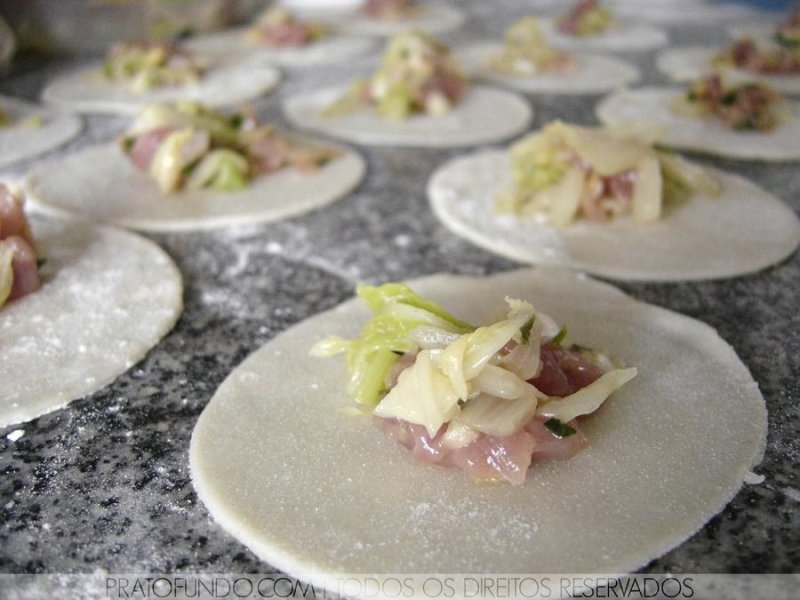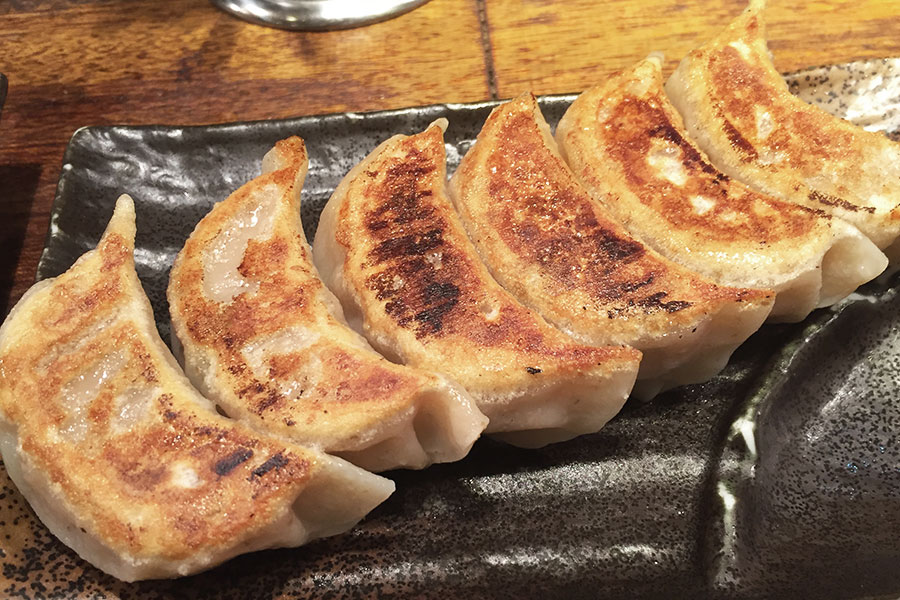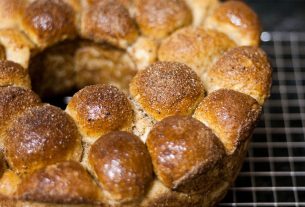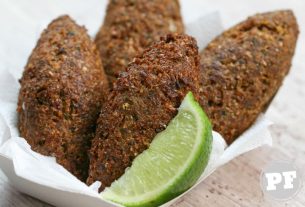I had wanted to do this for a long time gyoza at home, but Always I heard that the dough was difficult, you had to buy it ready-made and blah blah. Until last week I decided I was going to make it, so I looked for recipes for the dough.
They are all very similar in terms of ingredients, one thing or another changes. The biggest difference is in the way it is done. With so many options available, I chose the one that would have the greatest chance of working, and as incredible as it may seem, it’s not exactly for gyoza, it’s almost… the essence is the same: steamed dumpling, after all. The recipe is from my mother’s Jaden from Steamy Kitchen. And why did I think her recipe would have a better chance of success? Easy, she’s Chinese-American.
A little of history… gyoza in fact it has Chinese origins and is present in the cuisine of the main Asian countries (China, Japan and Korea). There are some differences in terms of filling and seasoning, but the base remains the same: a dumpling made from a thin dough made from wheat flour that begins half-fried and ends in steam.
The dough recipe has some observations and tips that are at the end of the post. Don’t forget to read, they are very important. The text is a translation-adaptation of the dough recipe found in the post “Xiao Long Bao – Shanghai Steamed Soup Dumplings“, Jaden authorized me to translate and publish it here.

Homemade Gyoza: Chinese Pastry
Makes: 45 units
Ingredients: FILLING
- 400 g chard (half a medium pack, previously sanitized)
- 400 g ground pork (loin)
- 1/2 pack nirá (Japanese chives, previously sanitized, chopped)
- 1 chunk fresh ginger (medium, cubes)
- 2 teeth garlic (chopped)
- 1 soup spoon Sesame oil (optional)
- refined salt (August)
- ground black pepper (August)
- shoyu (to taste; soup sauce)
- ajinomoto (to taste; monosodium glutamate)
Ingredients: DOUGH
- 400 g wheat flour
- 3/4 cup water (boiling)
- 1/4 cup water (free)
- 1 soup spoon vegetable oil
- water (hot for cooking)
1 cup: 250mL | 1 tablespoon: 15mL.
Mode: FILLING
- As the chard is bulky, I recommend sautéing it beforehand so it reduces. Heat the sesame oil in a pan, add the ginger, sauté for a few minutes, then add the garlic, nirá and chopped chard leaves (even the most fibrous, crispy white part), preferably of equal size, season. Let it cool, add the pork. If you want, you can add more ginger. Reserve in the refrigerator until ready to use.
Mode: MASS
- Place 360g of wheat flour in the bowl and add 1/3 of the hot water, and stir vigorously! More water, stir more, until the hot water runs out and stir until the dough starts to form. Then the cold water and oil. Stir until you can no longer stir. Then, knead on a floured surface until it is soft, light (8-10 minutes) and returns to its original position when pressed with your finger. Let it rest for 30 minutes in a plastic bag.
- Divide the dough into 4 parts, work with one piece while the others remain in the bag. In the original, Jaden asks you to make balls, then roll out and cut the dough. I changed it a little, divided the piece into two and rolled each one out with a rolling pin (if you have a rolling pin it will help a lot) as thin as possible (2-3mm) on a floured surface. I cut circles of 10cm in diameter (I used a cutter), the burrs can be gathered and opened again.
Mode: ASSEMBLY
- I added the filling, almost a spoonful (dessert).. if you add too much, it’s difficult to close it because there’s a whole frufruza that characterizes the cupcake. In this “my” recipe, you don’t need to wet the edges, as the dough is super fresh, press it a little and it seals easily, easily. Store the finished gyoza in a greased pan! Otherwise, everything will stick together.
- In a pan* heat oil (1 tablespoon), place the gyozas in the pan and let their base fry for a few minutes. It will be good when the base is golden. I recommend frying all the gyozas and then steaming them.
- In the same pan, return the first fried gyozas and add hot water until 1/3 of them are covered, close with the lid. Let it cook until the water dries. Repeat the process with all the gyoza, if you feel necessary you can do the steaming again to make sure the filling is cooked. Serve hot and base side up. Yields on average 40-50 gyozas.
- Pan: the non-stick coating makes the whole job easier, the regular one is also possible. However, you have to be more careful so that it doesn’t stick when the water dries.
- Filling: You can even use beef, but the flavor that pork provides is truly unmatched. If you are worried about using raw pork in the filling, sauté it together with the chard.
- Hot Water Pasta Notese: the secret is to use hot water, as it partially cooks the dough and helps the gluten develop better. This results in a light, elastic and malleable dough, but remains very resistant and holds the filling without tearing. Jaden recommends using chopsticks to stir, but you can use a fork, as the whisk will stick everything together. When I say stir, I mean stir to develop the gluten, after a few minutes you will finally add the cold water and stir even more. Then you have to knead and little by little the dough becomes light and soft.
- Notes on kneading: She says that whenever she uses dough that uses wheat flour and kneads, the recipe starts with using 90% of the amount of flour called for in the recipe, as it is possible to add more later if necessary. On the contrary, if you have a lot of flour, adding water wouldn’t be that easy.
The quantity is always measured by weight, instead of cups because it is more practical to calculate the 10% and each person measures the quantity differently, in addition to the measuring cups being different. While kneading the dough is sticky, add 1 tablespoon of flour at a time, and only add more after the dough has absorbed all the flour. The dough should be homogeneous, tending towards a soft ball. Let it rest, and when you press the dough it should return to its original position.
p.s.: Jaden if you’re reading it, I just want say thank you for the recipe (thanks your mother too! ^^)! Before I was affraid to make the dough, but simple and worked really well.

Sign up for our newsletter and stay up to date with exclusive news
that can transform your routine!
Warning: Undefined array key "title" in /home/storelat/public_html/wp-content/plugins/link-whisper-premium/templates/frontend/related-posts.php on line 12
Warning: Undefined array key "title_tag" in /home/storelat/public_html/wp-content/plugins/link-whisper-premium/templates/frontend/related-posts.php on line 13




